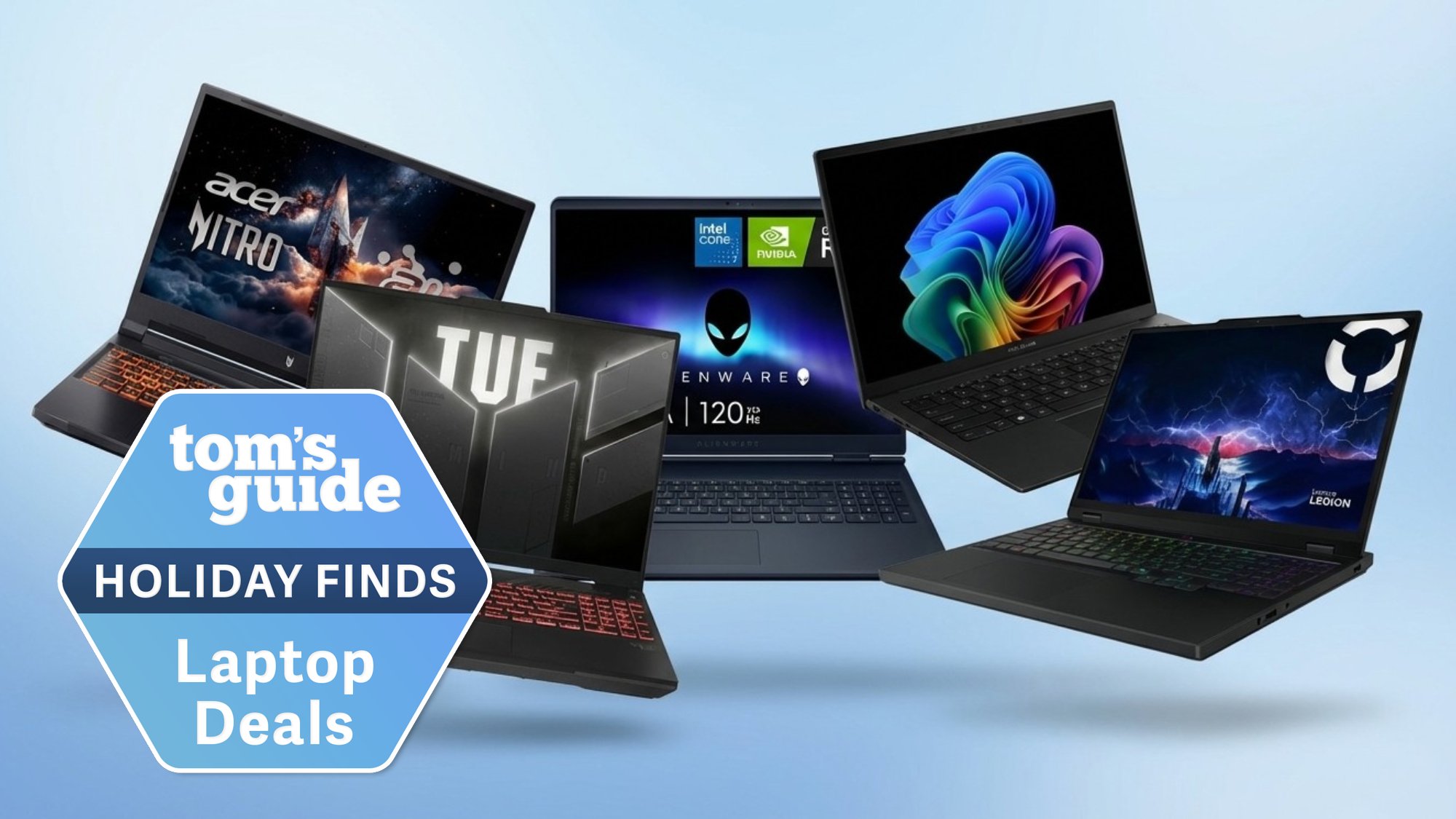I put OnePlus 13R vs Google Pixel 8a through a 7-round face-off — here's the winner
Can OnePlus topple Google?
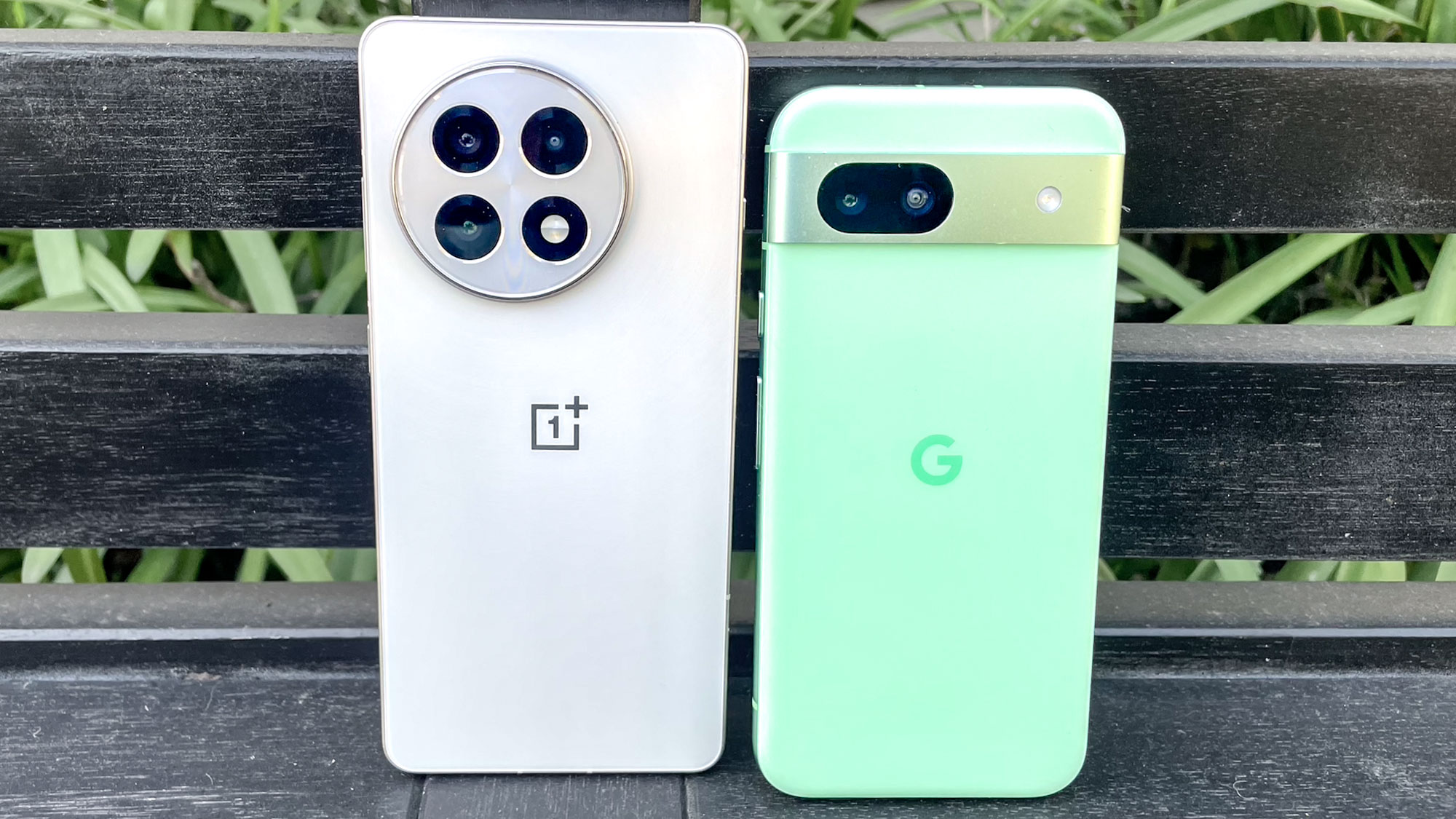
The OnePlus 13R vs. Google Pixel 8a showdown is no longer a face-off of sub-$500 phones, not after OnePlus did away with the cheaper $499 model for this year's version of its midrange device. But comparing the two phones is still worthwhile for anyone who wants a lower-cost alternative to pricey flagships.
That's because the OnePlus 13R and Pixel 8a both manage to pack in some premium capabilities despite their lower price tags. With OnePlus, it's a matter of getting high-end performance and epic battery life for less, while the Pixel 8a has been the go-to choice for anyone who wants a top performing camera phone and AI features for less.
But as I learned in my OnePlus 13R review, OnePlus isn't about to let Google claim the low-cost camera phone title without a fight. The new OnePlus features some big camera improvements, including a telephoto lens. Meanwhile, the OnePlus 13R includes the same AI features the phone maker introduced with its OnePlus 13 flagship.
Add it all up, and the OnePlus 13R makes a compelling case to be the best Android phone for anyone looking beyond flagship devices, even if it can no longer challenge the Pixel 8a as the best cheap phone under $500. Our OnePlus 13R vs. Google Pixel 8a face-off looks at whether it's worth paying up for the new OnePlus device or if you're better off saving your money on one of the best camera phones.
OnePlus 13R vs. Google Pixel 8a specs
| Row 0 - Cell 0 | OnePlus 13R | Google Pixel 8a |
| Screen size | 6.78 inches (2780x1264) | 6.1 inches (2400 x 1080) |
| Refresh rate | 120Hz | 120Hz |
| Chipset | Snapdragon 8 Gen 3 | Tensor G3 |
| RAM | 12GB | 8GB |
| Storage | 256GB | 128GB, 256GB |
| Rear cameras | 50MP main (f/1.8); 8MP ultrawide (f/2.2); 50MP telephoto/portrait (f/2.0) with 2x optical zoom | 64MP main, 13MP ultrawide |
| Front camera | 16MP (f/2.4) | 13MP |
| Battery size | 6,000 mAh | 4,492 mAh |
| Battery life (Hrs:Mins) | 18:49 | 11:21 |
| Charging speed | 80W wired | 18W wired, 7.5W wireless |
| Size | 6.4 x 3 x 0.32 inches | 6 x 2.9 x 0.4 inches |
| Weight | 7.3 ounces | 6.8 ounces |
| Colors | Nebula Noir, Astra Trail | Porcelain, Obsidian, Aloe, Bay |
OnePlus 13R vs. Google Pixel 8a price
The Pixel 8a sets the standard for midrange phones with a $499 starting price, which is $300 cheaper than Google's least expensive flagship phone, the Pixel 9. We've seen deals drop the Pixel 8a's price to as low as $299, depending on the retailer.
The good news is the OnePlus 13R also costs $300 less than OnePlus' flagship offering. But at $599, the OnePlus 13R also costs more than the Pixel 8a, unlike the OnePlus 12R which matched the starting price of Google's phone.
That's not necessarily a price hike, though. Last year, OnePlus offered a 128GB version of its R series phone for $499. This year, the OnePlus 13R only comes in a 256GB configuration, with the same $599 price as last year's 256GB model. You are getting more storage with the OnePlus 13R compared to the 128GB Pixel 8a, but you also get to pay less for Google's phone out of the gate.
Get instant access to breaking news, the hottest reviews, great deals and helpful tips.
Winner: Google Pixel 8a
OnePlus 13R vs. Google Pixel 8a design
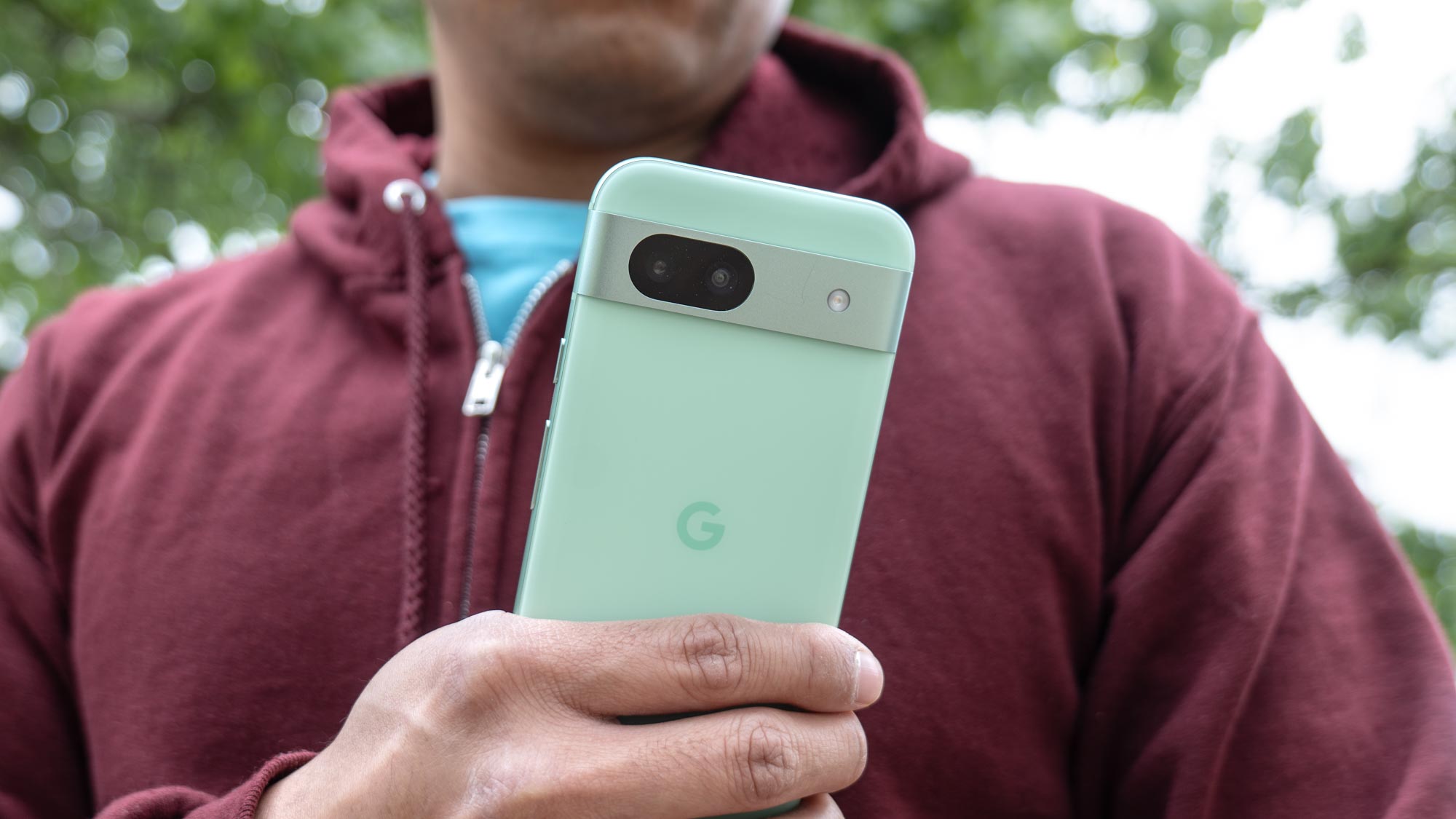
In a world of cookie-cutter designs for midrange phones, OnePlus and Google offer two of the more unique looks for their respective devices. The Pixel 8a has Google's distinctive camera bar spanning the length of the phone's back, with a matte back and aluminum frame adding to a very pleasing design. Meanwhile the OnePlus 13R shares its look with the OnePlus 13, highlighted by the circular camera array on the back of the phone.
While the OnePlus 13R is marginally thinner than its predecessor, it's wider and taller than the 6 x 2.9 x 0.4-inch Pixel 8a; it also outweighs Google's phone by half-an-ounce. The size difference is because of the larger screen that the OnePlus 13R offers.
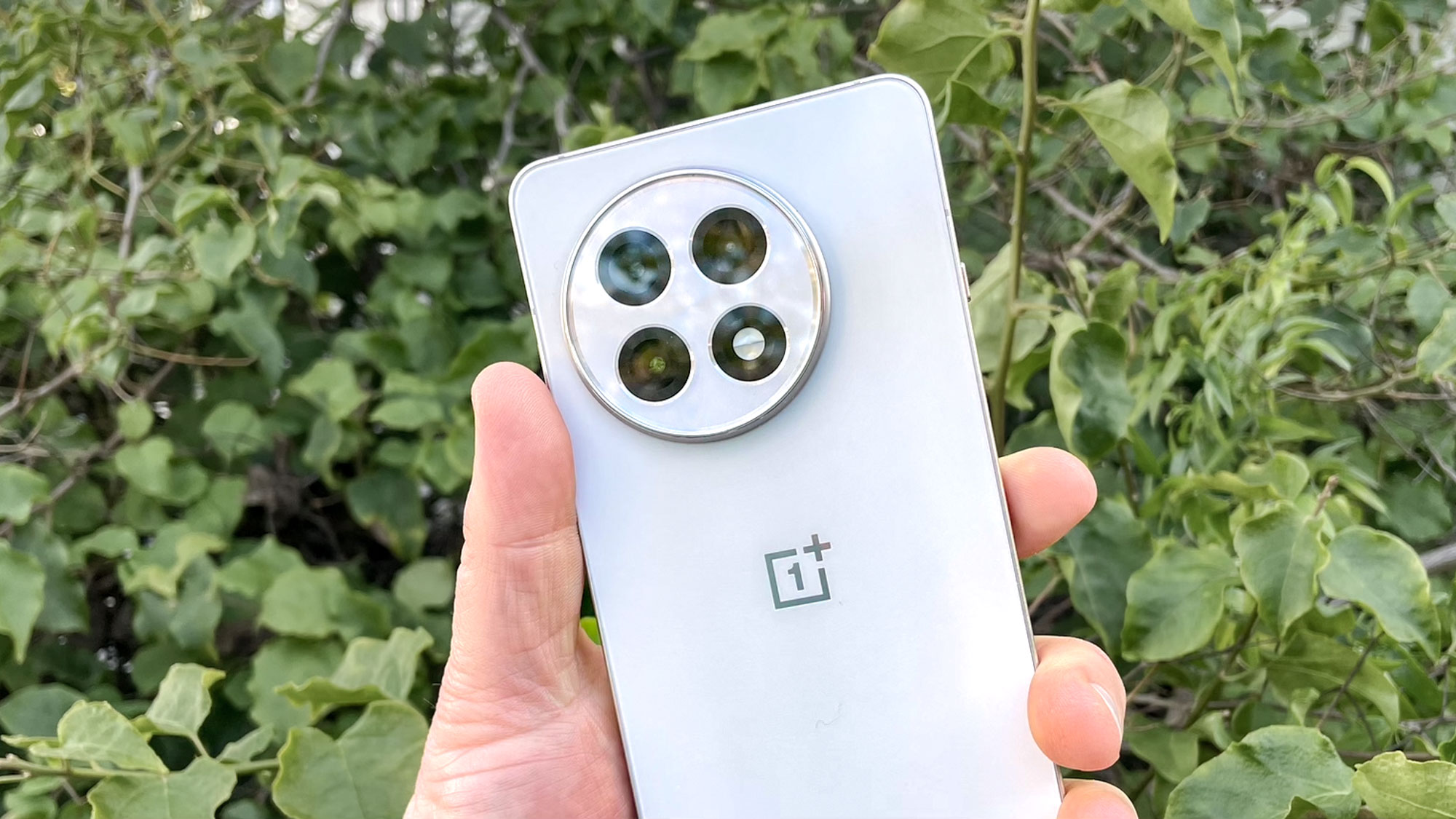
Google's phone can claim to have better durability than the OnePlus 13R, as the Pixel 8a offers an IP67 water resistance rating. That means it can survive a dunk in shallow water as opposed to the OnePlus 13R, which can only be sprayed with water and withstand any damage. That said, the OnePlus 13R does feature Gorilla Glass 7i to protect its body from scratches and other damage.
You get more color options with the Pixel 8a, which is available in Obsidian (black), Porcelain (white), Bay (blue) and Aloe (green). The OnePlus 13R is set to come in Nebula Noir (black) and Astral Trail (silver).
Design often comes down to personal taste, and I happen to think the horizontal camera bar on the Pixel 8a is a more clever use of space than the OnePlus 13R's circular camera array. But less subjectively, the better water resistance, more compact form and extra color options give Google the nod in this category.
Winner: Google Pixel 8a
OnePlus 13R vs. Google Pixel 8a display
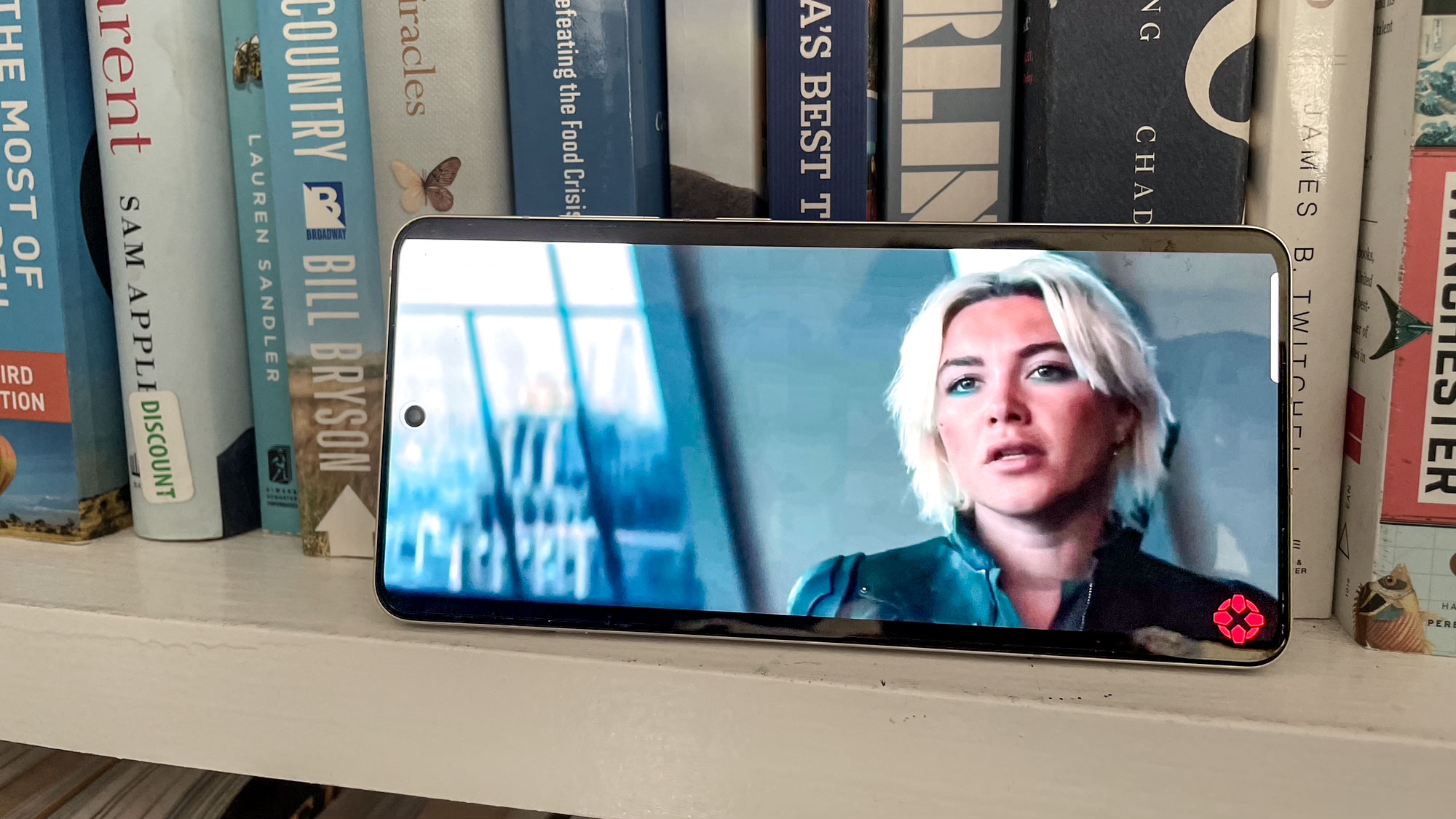
With a 6.78-inch panel, the OnePlus 13R offers more screen real estate than the Pixel 8a and its 6.1-inch panel. Both displays support 120 refresh rates, so you can be assured of smoother scrolling no matter which phone you use.
The OnePlus 13R lists the higher maximum brightness, claiming that its screen can reach 4,500 nits. The Pixel 8a claims a more modest peak brightness of 2,000 nits. In our lab, Google's phone posted the higher reading with a light meter, though I had an easier time making out details on the OnePlus 13R panel when I dimmed both displays on a bright, sunny day.
| Row 0 - Cell 0 | OnePlus 13R | Google Pixel 8a |
| Screen size | 6.78 inches | 6.1 inches |
| Brightness (nits) | 746 | 1,329 |
| sRGB % | 171.6 (Vivid); 121.9 (Natural) | 126.5 (Adaptive); 108.9 (Natural) |
| DCI-P3 % | 121.6 (Vivid); 86.3 (Natural) | 89.6 (Adaptive); 77.2 (Natural) |
| Delta-E | 0.3 (Vivid), 0.21 (Natural) | 0.24 (Adaptive); 0.29 (Natural) |
Measuring colors in the default settings for both phones — Vivid for the OnePlus 13R, Adaptive for the Pixel 8a — the OnePlus screen showed off a wider range of colors in both the sRGB and DCI-P3 color gamuts. The Pixel 8a had the more accurate colors in default mode based on its lower Delta-E rating, though once I switched to Natural mode, the OnePlus 13R had the more accurate reading.
Both phones have very good displays, and despite the low light-meter reading, I found the OnePlus 13R's panel to be the easier to make out when I was outdoors. I also appreciated viewing colorful videos on a larger panel.
Winner: OnePlus 13R
OnePlus 13R vs. Google Pixel 8a cameras
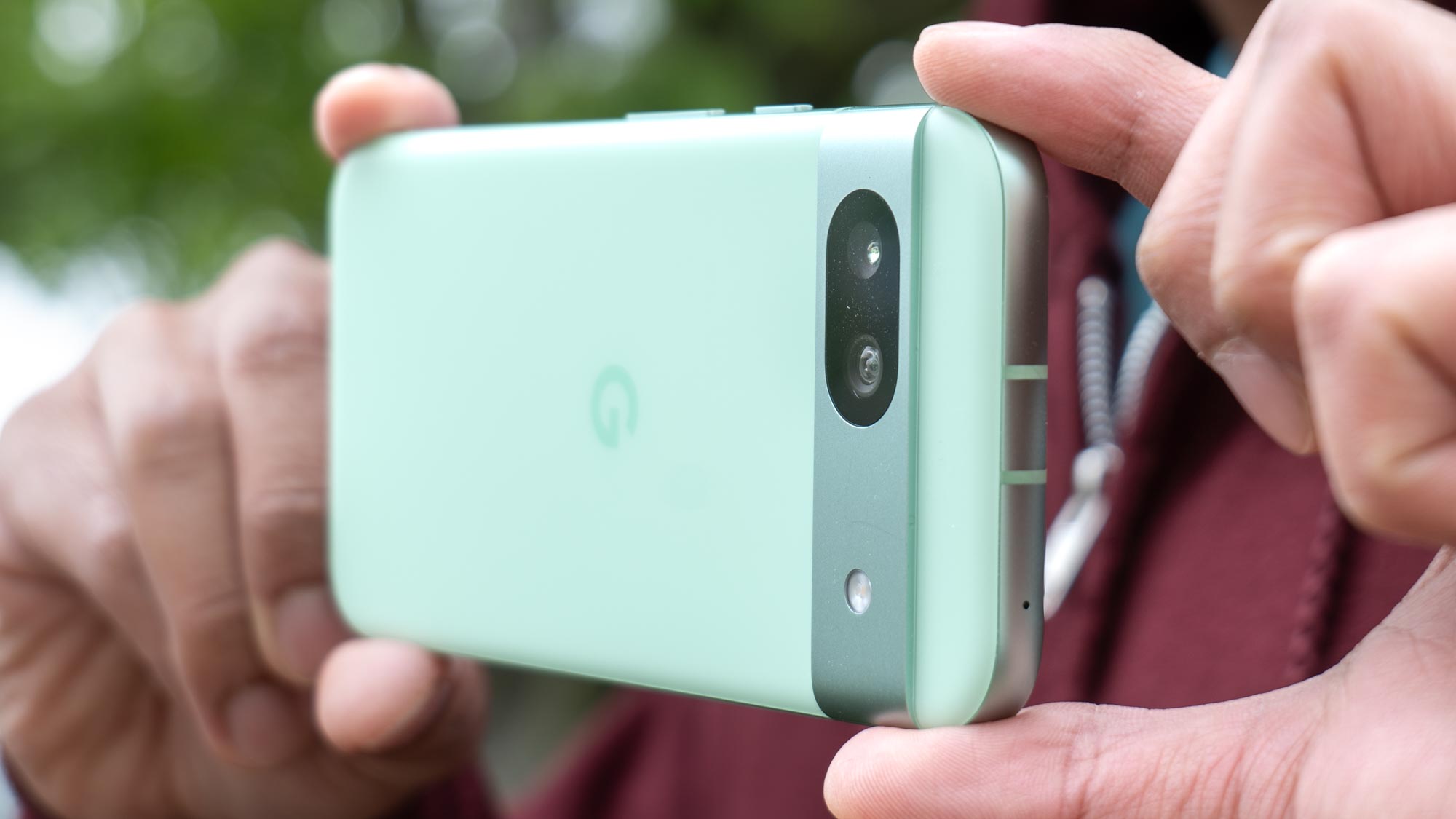
Cameras are Google's strong suit, and the Pixel 8a doesn't disappoint in this area, even with its lower price tag. Google equips the phone with a 64MP main camera and 13MP ultrawide lens, with outstanding photo processing software doing much of the heavy lifting. The result are some truly stellar photos with high dynamic range and strong performance in low-light settings. The Pixel 8a has beaten back plenty of low-cost rivals in our 200-photo face-offs, including Samsung's Galaxy A35 and the Nothing Phone 2a. (We've got a similar 200 photo face-off with the OnePlus 13R coming soon.)
OnePlus turns to a big camera improvement to challenge the Pixel 8a in the form of a dedicated telephoto lens. The 50MP sensor supports a 2x optical zoom and seems optimized for portrait shots. (When you switch to Portrait mode, you default to a 2x shot with the OnePlus 13R.) Otherwise, OnePlus completes its triple camera array with a 50MP main camera and an 8 MP ultrawide lens.
The OnePlus 13R cameras emphasize bright colors versus the more balanced tone of the Pixel 8a shots. Depending on the shot, that can work to either phones advantage. This Reuben sandwich, for examples, looks much more inviting in the OnePlus 13R photo, thanks to the warmer tone that emphasizes the toasty bread and bright pink corned beef. The Pixel 8a's cooler look mutes the overall impact of the image.
In contrast, the darker tones in the Pixel 8a serve this image of my daughter in a redwood forest hike much better. There's better contrast to showcase the rings on the downed redwood tree, and the plants in the background stand out a bit more than they do in the OnePlus 13R shot. I think the Pixel 8a makes my daughter look too pale here, but overall, it's a better image.
Comparing portrait modes on the two phones, both do a decent job on the background blur, though the Pixel 8a leaves too much of the fence on the left side of the shot untouched — the OnePlus 13R's blur is more complete. But in a challenging lighting situation, the Pixel 8a compensated for the shadows cast by the setting sun a little bit better than the OnePlus 13R did. You see more of my daughter's face in the Pixel 8a shot, while the OnePlus 13R loses part of her face in backlighting.
That's actually uncharacteristic of the OnePlus 13R's low-light performance, as it generally did quite well when the lights were low. A night mode photo of some holiday decorations looks much sharper in the OnePlus 13R shot. It captures the cascading purple lights in more detail, and you can see more of the scene behind the fence. The Pixel 8a shot isn't poor by any means, but the OnePlus 13R photo is the one I'd share.
When testing the OnePlus 13R's zoom lens, I got mixed results — some times, the Pixel 8a would take a better close-up while other times the 13R would win the day. This 4x zoom on a decorative dragon is an example of the latter, as the OnePlus 13R calls out more detail without over-exposing the shot. The Pixel 8a does a good job on the whole compensating for its lack of a zoom lens with computational photography, but in this instance, the OnePlus 13R's dedicated camera wins the day.
I still think the Pixel 8a has the greater reliability when it comes to cameras — if I could only take a photo with one camera phone, I'd wager that the Pixel 8a would produce a better shot more often than not. But this is the first time in a long time that I've really seen another midrange phone challenge the Pixel's camera supremacy. The OnePlus 13R may not exceed the Pixel 8a's camera capture capabilities, but it comes a lot closer to matching that output than a lot of rival devices.
Winner: Google Pixel 8a
OnePlus 13R vs. Google Pixel 8a performance
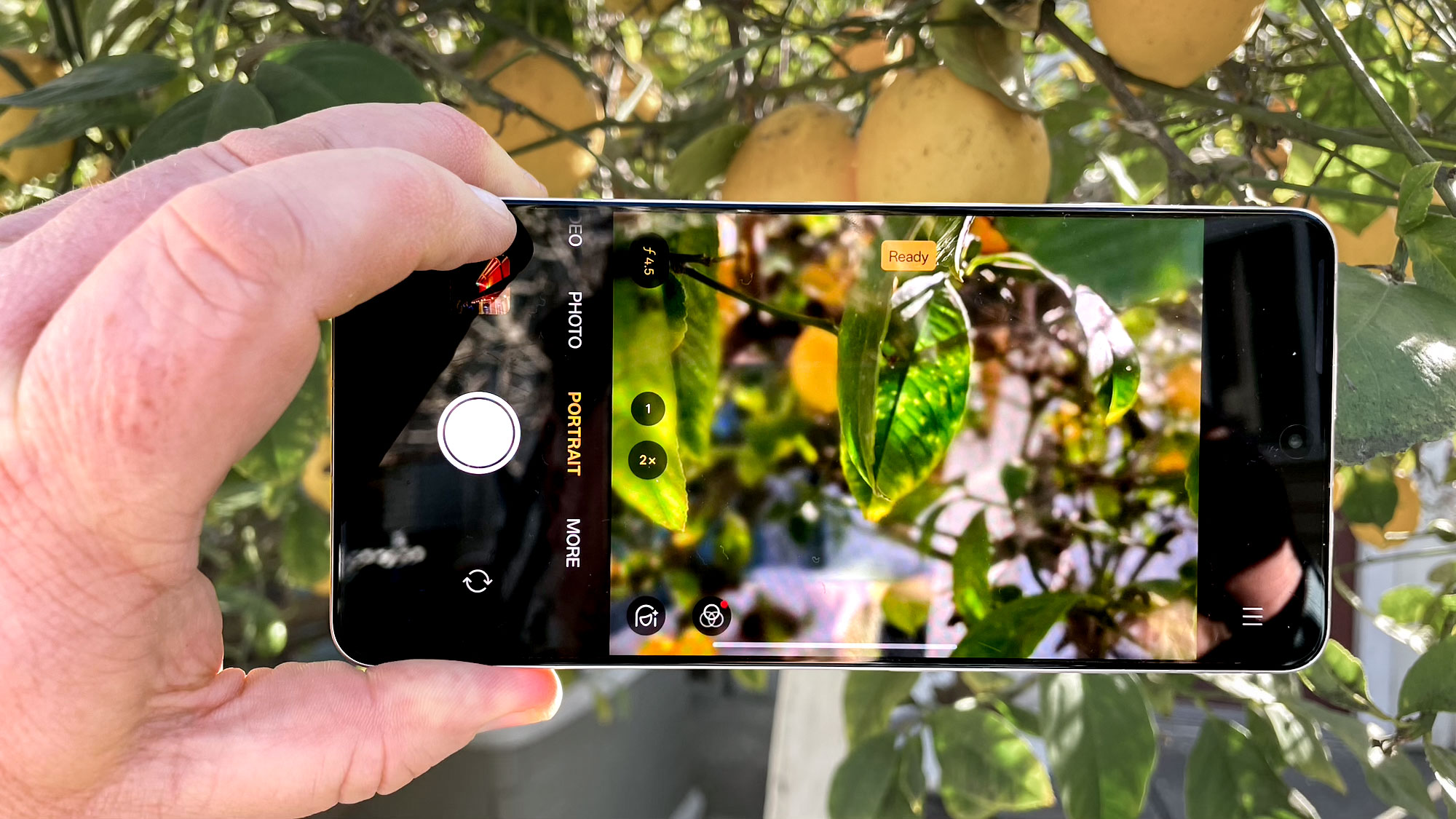
The OnePlus 13R enjoys a big edge on paper thanks to OnePlus turning to the Snapdragon 8 Gen 3 silicon to power the phone. While that's a step back from the Snapdragon 8 Elite system-on-chip inside the new OnePlus 13 flagship, it's not that big a step back, as the Gen 3 is a little more than a year old and featured in some of the top-performing Android phones of 2024.
Meanwhile, the Pixel 8a also uses an older chip in Google's own Tensor G3. (The Pixel 9 flagships run on newer Tensor G4 silicon.) However, the Tensor chipsets are more focused on powering AI features than driving blazing performance, which you'd imagine will work to the Pixel 8a's detriment in this category.
| Row 0 - Cell 0 | OnePlus 13R | Google Pixel 8a |
| Chipset | Snapdragon 8 Gen 3 | Tensor G3 |
| Geekbench score (single core/multicore) | 2098 / 6533 | 1581 / 4093 |
| Wild Life Unlimited (fps) | 115:3 | 50.9 |
| Adobe Premiere Rush video transcode (Mins:Secs) | 1:24 | 0:56 |
And you'd have imagined correct. In Geekbench, which measures CPU performance, the multicore score produced by the OnePlus 13R is 60% better than the Pixel 8a's result. The OnePlus 13R also produces double the number of frames per second in 3DMark's Wild Life Unlimited benchmark for graphics performance.
About the only benchmark that the Pixel 8a tops the OnePlus 13R in involves video transcoding with Adobe Premiere Rush. Here, the Pixel 8a shaved nearly 30 seconds off the OnePlus 13R's time to transcode a video clip.
On its own the Pixel 8a produces decent performance, handling the tasks the average smartphone owner is likely to throw at it. But the OnePlus 13R is undeniably faster in most respects.
Winner: OnePlus 13R
OnePlus 13R vs. Google Pixel 8a battery life and charging
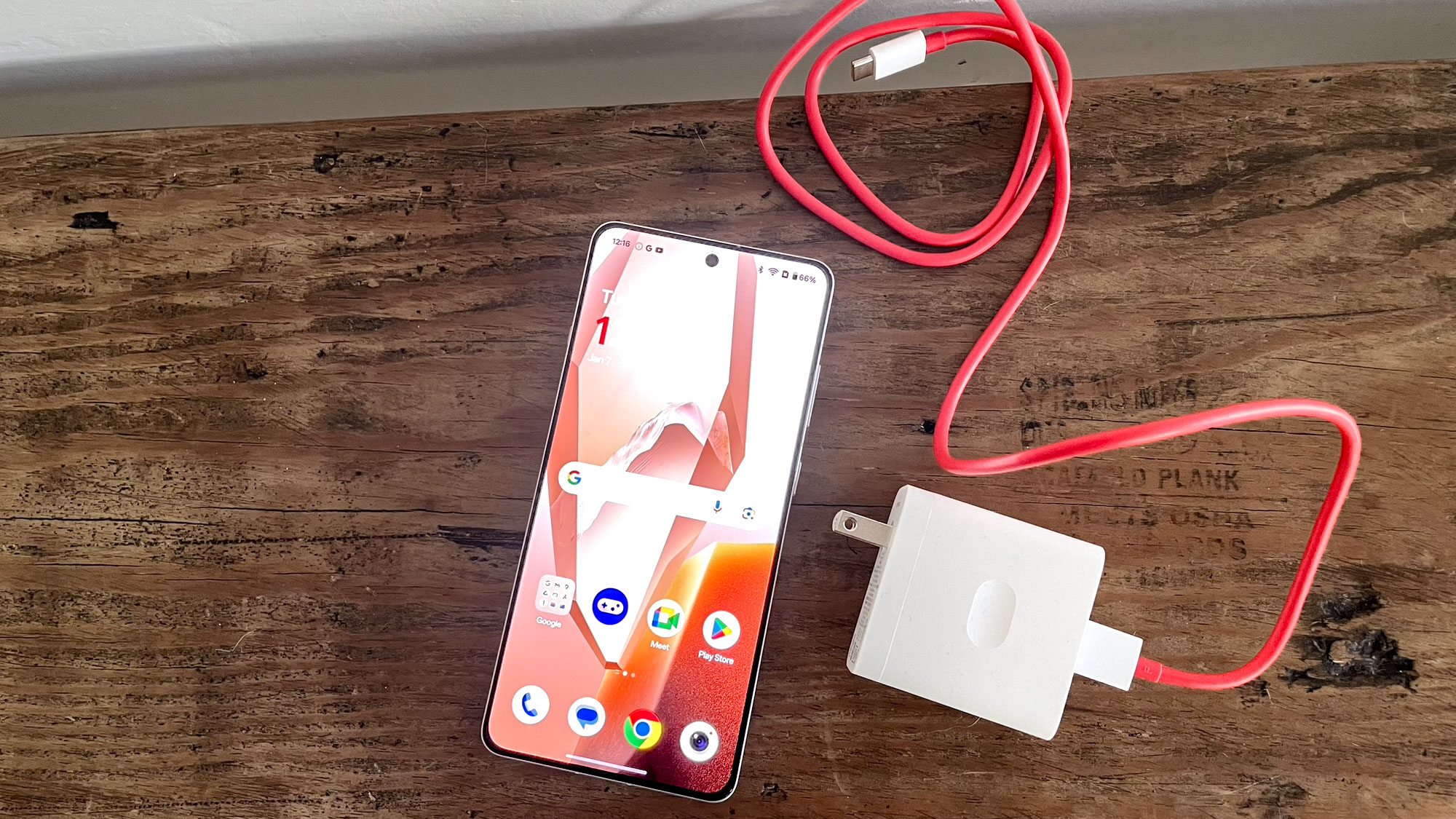
Battery life isn't also much of a contest, as the OnePlus 13R brings a 6,000 mAh battery to the table, compared to the 4,492 mAh power pack in the Pixel 8a. Add in the superlative power management features that the Snapdragon 8 Gen 3 is known for — you'll find many phones with that chipset on our best phone battery life list including last year's OnePlus 12 — and you can see the mismatch before it happens.
Indeed, the OnePlus 13R turned in a time of 18 hours and 49 minutes on our battery test. Not only is that more than 8.5 hours longer than the average smartphone, it also overpowers the 11 hours and 21 minutes posted by the Pixel 8a. While Google's phone beats the average smartphone, it's no match for the OnePlus 13R when it comes to lasting a long time on a charge.
The OnePlus 13R charges faster, too, thanks to 80W wired charging support in the U.S. Even though OnePlus only includes a 55W charger with its phone, we still managed to get the OnePlus 13R to a 60% charge in our testing after half an hour. Using a 30W charger, the Pixel 8a hit a 33% charge in that same time.
If the Pixel 8a can claim any victory here, it's that Google included wireless charging with its midrange phone. OnePlus doesn't offer that feature, presumably as a way of keeping the OnePlus 13R's cost down.
Winner: OnePlus 13R
OnePlus 13R vs. Google Pixel 8a software and special features
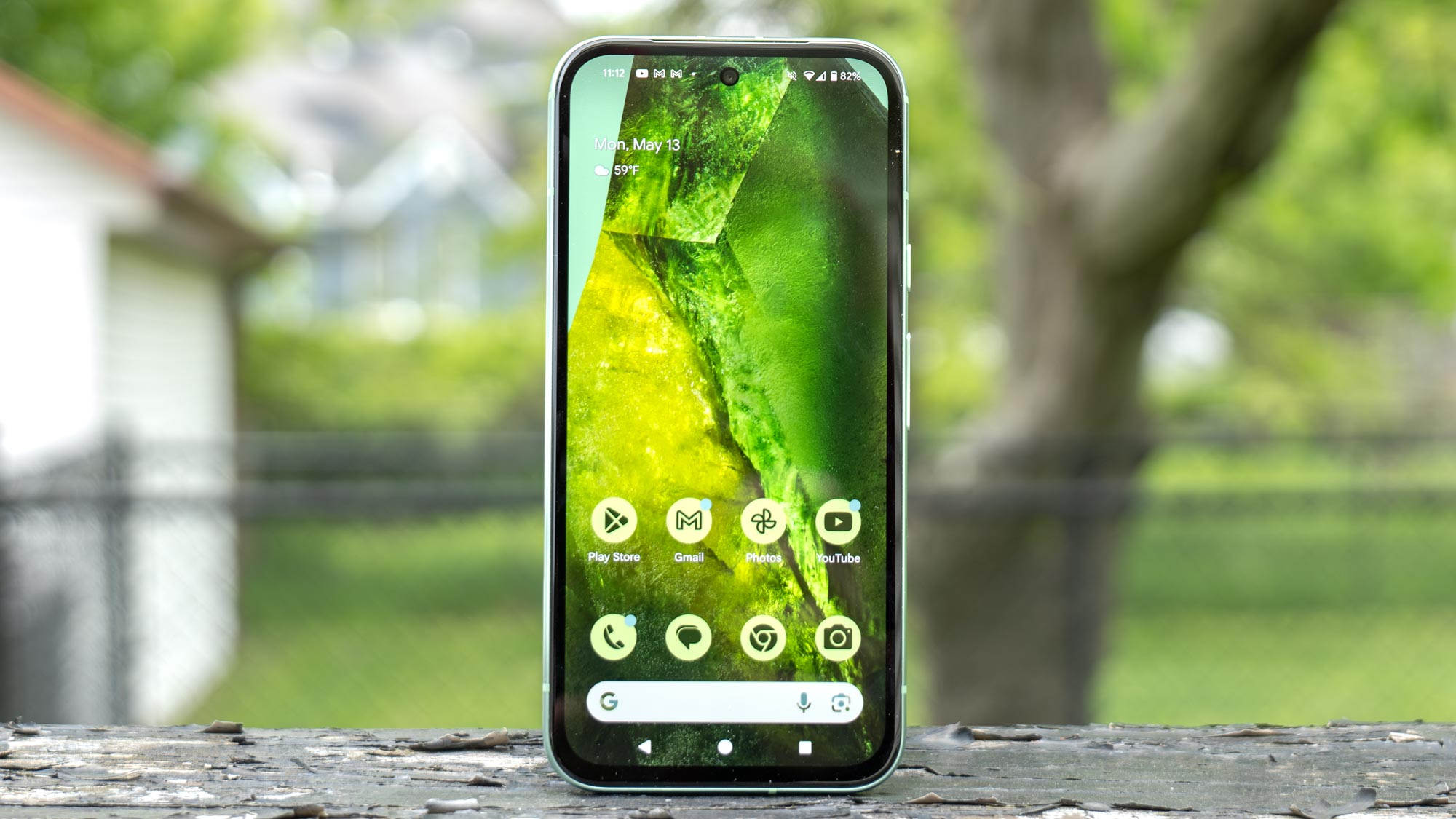
Apart from its camera performance, the Pixel 8a's calling card is all the AI features supported by its Tensor G3 chipset. Highlights include photo editing tools like Magic Eraser for seamlessly removing objects and people from photos, Best Take for making sure everyone's smiling an looking at the camera in group shots and Audio Magic Eraser for removing distracting sounds from video footage. You'll also find translation tools, Circle to Search capabilities and an excellent Call Assist feature where the phone's on-board assistant can answer calls and tell you what the person is calling about.
Past OnePlus phones haven't really emphasized AI features, but that's changed with the OnePlus 13 series. Circle to Search is now here as are other capabilities like an Intelligent Search feature for finding files on your phone faster and AI notes, which includes formatting and rewriting tools. The highlight of the OnePlus 13R's AI toolset are several photo editing features to remove blurring, play up details, get rid of shadows and erase distracting people or objects.
The OnePlus 13R's photo-editing features work well, for the most part, with AI Eraser and AI Reflection Erase the pick of the crop. I had less success using the blur and detail tools to improve photos. As for other AI features on board the OnePlus 13R, they lack the polish of similar tools on the Pixel 8a — understandable, as Google has been at this AI game for a while now.
With the OnePlus 13R, OnePlus has improved software support to four years, with an extra two years of security updates. That's still shy of the seven years of software and security support you get from the Pixel 8a.
Winner: Google Pixel 8a
OnePlus 13R vs. Google Pixel 8a verdict
By the narrowest of margins, the Pixel 8a edges out the OnePlus 13R in our midrange phone comparison, riding its lower price and more extensive AI features to victory. But even the most adamant Pixel fans would have to concede that the OnePlus 13R comes awfully close to toppling the Pixel 8a from its perch.
| Row 0 - Cell 0 | OnePlus 13R | Google Pixel 8a |
| Price (15 points) | 11 | 13 |
| Design (10 points) | 7 | 8 |
| Display (15 points) | 11 | 10 |
| Cameras (20 points) | 17 | 18 |
| Performance (15 points) | 13 | 10 |
| Battery life and charging (10 points) | 10 | 8 |
| Software (15 points) | 10 | 13 |
| Total (100 points) | 79 | 80 |
The OnePlus 13R excels in the areas you'd expect just looking at the specs sheets — namely performance and battery life. But the fact that OnePlus 13R came so close to the Pixel 8a in terms of camera performance practically turns any OnePlus 13R vs. Google Pixel 8a buying decision into a coin flip.
In the end, I think the Pixel 8a delivers more value, as you can hold on to the phone longer and get more out of the Tensor-powered AI features. That the Pixel 8a's cameras still perform very well under a wide variety of circumstances helps clinch the win. But if you're looking for an alternative to pricier flagships and value performance and battery life, the OnePlus 13R is easily worth its higher cost.
More from Tom's Guide
Philip Michaels is a Managing Editor at Tom's Guide. He's been covering personal technology since 1999 and was in the building when Steve Jobs showed off the iPhone for the first time. He's been evaluating smartphones since that first iPhone debuted in 2007, and he's been following phone carriers and smartphone plans since 2015. He has strong opinions about Apple, the Oakland Athletics, old movies and proper butchery techniques. Follow him at @PhilipMichaels.

